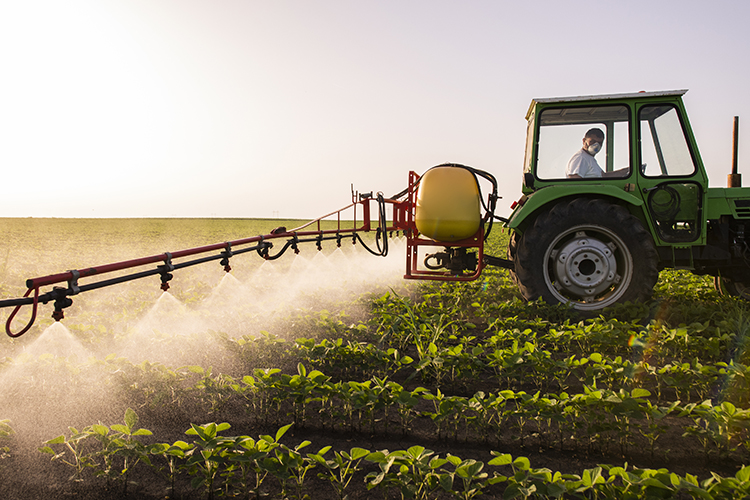
In the first quarter of the year, Brazil saw a trade surplus of $3.7 billion in oil and oil products, 31% of the total trade balance of the period, even though, under pressure resulting from the war between Russia and Ukraine, the prices and import volumes of this group of products have grown at a faster pace than exports. The picture, according to specialists, shows that the commodity and its products are still expected to play an influential role for a few more years in the country’s foreign trade, even with the expected transition to other energy sources.
The figures of the Indicator of Foreign Trade (Icomex), organized by Fundação Getulio Vargas’s Brazilian Institute of Economics (Ibre/FGV) from government data, show that Brazil has seen a surplus in the balance of oil and oil products since 2016, and for four years the balance of this group has contributed at least one-fifth of the country’s total trade balance.
In 2018, the trade of these products resulted in 20.8% of the total Brazilian trade surplus, advancing to 27.8% in 2019. Last year, the trade surplus in exports and imports of oil and oil products was the highest since Icomex records began, in 1997, with a balance of $14.31 billion, equivalent to 23.3% of the total surplus, of $61.4 billion.
In the first three months of this year, the weight of oil and oil products in the balance was a little less representative compared to the same period last year. From January to March 2021, net exports totaled $3.24 billion, or 40% of the total trade surplus for the same period. In the first quarter of 2020, oil and oil products totaled $3.62 billion, above the total trade surplus for the period, of $2.8 billion. From January to March 2019, oil and oil products totaled $2.1 billion, equivalent to 46.2% of the trade surplus for the period.
Lia Valls, an economist and researcher at Ibre, points out, however, that there is no marked trend in the first months of the year. The values of oil exports and imports may oscillate throughout the year and several factors influence both volumes and prices, from domestic demand, which impacts the amount of fuel imported, to the policy of foreign purchases by Petrobras and oil prices, which more recently have also been under greater impact from the war between Russia and Ukraine. What can be said, she says, is that the energy transition to less polluting sources is likely to change the impact of the oil and oil products group on the trade balance as a whole, but this is a process likely to take time.
For now, says Ms. Valls, the prices and volumes of imported oil and oil products started the year faster than those of exports. From January to March this year, the quantity imported in this group rose 25% against the same period of 2021, with a 71.1% rise in prices. In exports, the volume increased 10.2%, and prices, 53%. The different composition for shipments and foreign purchases in this group of commodities helps explain the difference in pace at both ends.
Data by the National Petroleum Agency (ANP), which publishes import and export data for oil and oil products under other criteria, show that this group closed 2021 with a surplus of $19.03 billion. Of the $38.43 billion exported, 80% were oil and only 20% were oil products. In imports, the ratio is almost reversed. Of the $19.4 billion in imports, 79% were oil products. Also according to ANP data, the export of oil and oil products totaled $7.34 billion in the first two months of 2022 while imports were $3.31 billion.
Welber Barral, a former foreign trade secretary and a partner at BMJ Consultores, says Brazil could be taking much more advantage of the impact of high oil prices with more intense effects on the balance as a whole, if there were not structurally a still large dependence on imports of oil products.
Besides the difference in the composition of imports and exports, the type of oil sold and bought by Brazil is also different, said José Augusto de Castro, head of the Brazilian Foreign Trade Association (AEB). Oil is still one of the three most important items on Brazil’s export list, along with iron ore and soybeans, he said. But, although we have increased our production of oil and also exports in recent years, the ability of Brazilians to negotiate prices is limited, he said.
The three big world oil producers today are the United States, Saudi Arabia and Russia, said Caio Carvalhal, a partner at Atmosphere Capital, specialized in investments abroad. He explains that the Russia-Ukraine war and, more recently, the new lockdowns in China due to Covid-19 have interrupted oil price adjustments. For him, even if there is a disruption in oil supply from Russia – something that seems to be starting to happen now – there are pockets that can normalize supply. He exemplifies with production from Saudi Arabia and the UAE, already-stocked oil from Iran, and U.S. shale production. This can happen in a period of six to nine months after an eventual rupture, he points out. With this, the expectation, he says, is that prices will remain around $100 even if momentary price spikes occur.
Source: Valor International

/i.s3.glbimg.com/v1/AUTH_37554604729d4b2f9f3eb9ad8a691345/internal_photos/bs/2021/Z/V/xhxHZiQHA9qqoXeBp3Nw/280721gustavo16.jpg)
/i.s3.glbimg.com/v1/AUTH_37554604729d4b2f9f3eb9ad8a691345/internal_photos/bs/2022/e/N/qgfJ7USROBebcwxuIQOQ/04bra-100-desglob-a3-img01.jpg)
/i.s3.glbimg.com/v1/AUTH_37554604729d4b2f9f3eb9ad8a691345/internal_photos/bs/2022/Q/A/6OABDsQO25p8wA2rEPNw/28bra-100-bala-a4-img01.jpg)
/i.s3.glbimg.com/v1/AUTH_37554604729d4b2f9f3eb9ad8a691345/internal_photos/bs/2021/s/5/KNQcxDREWiWKoAfkYRDg/ydray-vila-clementino-282-29.jpg)

/i.s3.glbimg.com/v1/AUTH_37554604729d4b2f9f3eb9ad8a691345/internal_photos/bs/2022/S/W/15ynjaQ8q0lDWHWvUFKQ/15fin-100-fusao-c6-img01.jpg)

/i.s3.glbimg.com/v1/AUTH_37554604729d4b2f9f3eb9ad8a691345/internal_photos/bs/2022/Z/U/O8KTkZSjAPnTnnTeAKUg/011119abiquim085.jpg)
